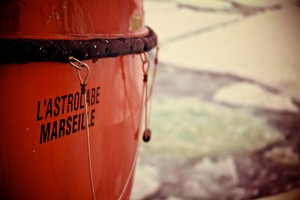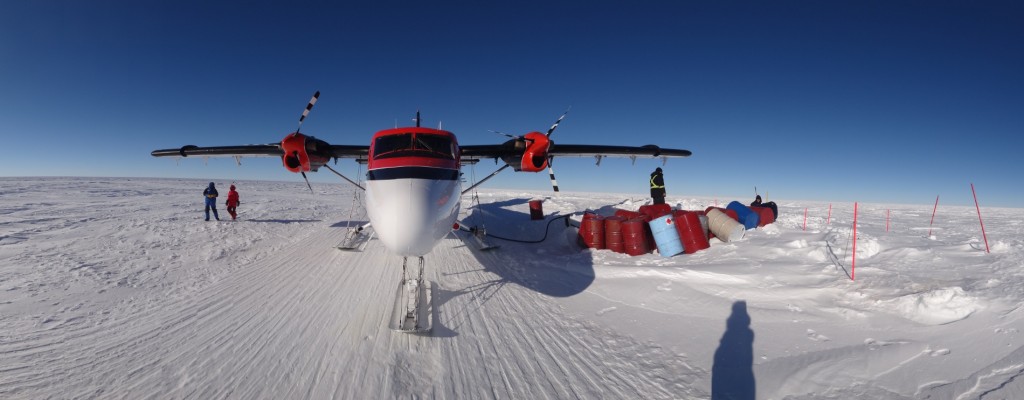Alex writes: I left the London (UK) and flew to Singapore and then onto Sydney. From Sydney I then flew to Hobart, in Tasmania. I joined other members from the French Polar Institute (IPEV) and the Italian Antarctic Programme (ENEA) on the French L’Astrolabe, a near icebreaker class vessel.
We were travelling with French ex-prime minister Michel Rocard and French Polar Institute Director Yves Frenot among other VIPs.
I was the ship’s doctor – responsible for the health and well-being of the multinational crew and passengers. It took around 10 days to reach land – the Antarctic coast. It was a magnificent experience – from enduring 12 metre swells of the Southern Ocean to clear skies above the still ocean dotted with icebergs.
We arrived at the French Antarctic Station – Dumont d’Urville – named after the famous French explorer. Enroute I saw my first penguin and I was later surprised to find a breeding colony of around 60,000 Adelie penguins – the sight and smell of which I will never forget. It really was like being on a different planet – an ice world – perhaps one of our galaxy’s distant planet’s orbiting ice moons.
[youtube VWxxC2bGvYk]
Acting as the inflight doctor, from Dumont Duville we flew 5 hours by a twin otter plane inland towards Concordia Station – our final stop. We had landed midway to refuel and whilst checking our passengers for symptoms related to altitude sickness – at that point I looked around me to an unique experience- quickly realising that we were among the most isolated human beings on Earth. We flew from sea level to around 3800 metres altitude in 5 hours.
How isolated is Concordia Station
The only way to reach the outpost is by plane, and it is dangerous for pilots to fly here due to the extreme isolation and unpredictable weather. The station is completely isolated from February to November, due to extreme low temperatures and 4 months of complete darkness – the cold, the wind and the permanent darkness make the trip too dangerous. Any problems we encounter during our stay here we will have to solve on our own…
Alex writes: I left the London (UK) and flew to Singapore and then onto Sydney. From Sydney I then flew to Hobart, in Tasmania. I joined other members from the French Polar Institute (IPEV) and the Italian Antarctic Programme (ENEA) on the French L’Astrolabe, a near icebreaker class vessel.
We were travelling with French ex-prime minister Michel Rocard and French Polar Institute Director Yves Frenot among other VIPs.
I was the ship’s doctor – responsible for the health and well-being of the multinational crew and passengers. It took around 10 days to reach land – the Antarctic coast. It was a magnificent experience – from enduring 12 metre swells of the Southern Ocean to clear skies above the still ocean dotted with icebergs.
We arrived at the French Antarctic Station – Dumont d’Urville – named after the famous French explorer. Enroute I saw my first penguin and I was later surprised to find a breeding colony of around 60,000 Adelie penguins – the sight and smell of which I will never forget. It really was like being on a different planet – an ice world – perhaps one of our galaxy’s distant planet’s orbiting ice moons.
[youtube VWxxC2bGvYk]
Acting as the inflight doctor, from Dumont Duville we flew 5 hours by a twin otter plane inland towards Concordia Station – our final stop. We had landed midway to refuel and whilst checking our passengers for symptoms related to altitude sickness – at that point I looked around me to an unique experience- quickly realising that we were among the most isolated human beings on Earth. We flew from sea level to around 3800 metres altitude in 5 hours.
How isolated is Concordia Station
The only way to reach the outpost is by plane, and it is dangerous for pilots to fly here due to the extreme isolation and unpredictable weather. The station is completely isolated from February to November, due to extreme low temperatures and 4 months of complete darkness – the cold, the wind and the permanent darkness make the trip too dangerous. Any problems we encounter during our stay here we will have to solve on our own…






Discussion: one comment
Hello.
My name is Koichi Minami of AER Leasing.
We are a Japanese leasing company specialized in general aviation aircraft including Twin Otter.
We are now launching our website where I wanted to use Twin Otter picture in your website.
Would it be possible for you to allow me to use the picture?
I apologize if it was not appropriate to send this kind of message through this reply function in your website.
I appreciate for your feedback.
Sincerely,
Koichi Minami